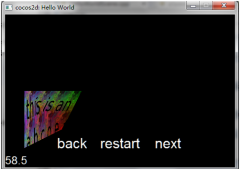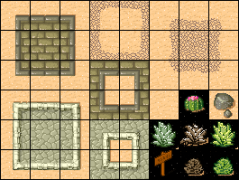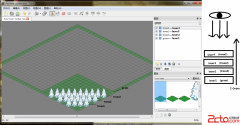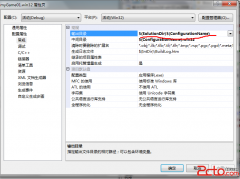Cocos2D-x , CCTextureCache的多线程加载原理和使用方法
来源:未知 责任编辑:责任编辑 发表时间:2013-12-01 14:14 点击:次
在查阅资料学习的时候,看到一个texture的异步加载,觉得挺有用的所以将具体的原理和使用方法分享出来,后面大家根据浏览器的特性可以做相应修改移植。
p>void CCTextureCache::addImageAsync(const char *path, CCObject *target, SEL_CallFuncO selector)
p>{
p>CCAssert(path != NULL, “TextureCache: fileimage MUST not be NULL”);
p>CCTexture2D *texture = NULL;
p>// 优化
p>std::string pathKey = path;
p>CCFileUtils::ccRemoveHDSuffixFromFile(pathKey);
p>pathKey = CCFileUtils::fullPathFromRelativePath(pathKey.c_str());
p>texture = m_pTextures->objectForKey(pathKey); //根据pathkey查看是否纹理已经加载过,如果已经有了,则不重复加载
p>std::string fullpath = pathKey;
p>if (texture != NULL)
p>{
p>if (target && selector)
p>{
p>(target->*selector)(texture);
p>}
p>return;
p>}
p>if (target)
p>{
p>target->retain();
p>}
p>// lazy init
p>static bool firstRun = true;
p>if (firstRun)
p>{
p>s_pAsyncStructQueue = new queue<asyncstruct>();
p>s_pImageQueue = new queue<imageinfo>();
p>pthread_mutex_init(&amp;s_asyncStructQueueMutex, NULL);
p>sem_init(&amp;s_sem, 0, 0);
p>pthread_mutex_init(&amp;s_ImageInfoMutex, NULL);
p>pthread_create(&amp;s_loadingThread, NULL, loadImage, NULL); //创建新的线程,用于后台加载图片
p>//创建调度队列,用来根据已加载的图片进行纹理转换
p>CCScheduler::sharedScheduler()-&gt;scheduleSelector(schedule_selector(CCTextureCache::addImageAsyncCallBack), this, 0, false);
p>need_quit = false;
p>firstRun = false;
p>}
p>// 生成异步结构
p>AsyncStruct *data = new AsyncStruct();
p>data-&gt;filename = fullpath.c_str();
p>data-&gt;target = target;
p>data-&gt;selector = selector;
p>// 添加到队列异步结构
p>pthread_mutex_lock(&amp;s_asyncStructQueueMutex);
p>s_pAsyncStructQueue-&gt;push(data); //将需要加载的图片放入队列中
p>pthread_mutex_unlock(&amp;s_asyncStructQueueMutex);
p>sem_post(&amp;s_sem);
p>}
p>
p>从上述代码分析可以看出其过程:
p>1.创建线程,用于后台加载
p>2. 将对于需要加载的图片放入队列中
p> 3. callback函数设定,用于将加载完成的图片转为纹理,等待使用其调用是由CCTimer::update调用的。
p> 4. addImageAsyncCallBack函数在处理完纹理转换,还会调用addImageAsync传入的SEL_CallFuncO selector,实现用户加载图片纹理之后的具体处理。
p>使用例子:
p>CCTextureCache::sharedTextureCache()-&gt;addImageAsync(“Images/blocks.png”, this, callfuncO_selector(TextureCacheTest::loadingCallBack));
p>loadingCallBack函数就是使用异步加载完之后的用户可以自处理结果,比如初始化一个sprite,用这个纹理贴出来。
相关新闻>>
最新推荐更多>>>
- 发表评论
-
- 最新评论 进入详细评论页>>

![cocos2d_x+lua[2]](/uploads/allimg/131030/110J64609-0-lp.jpg)








